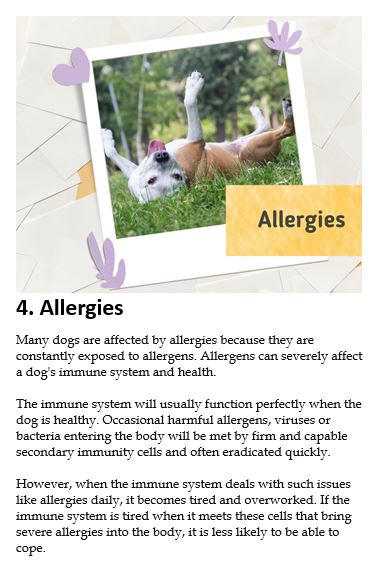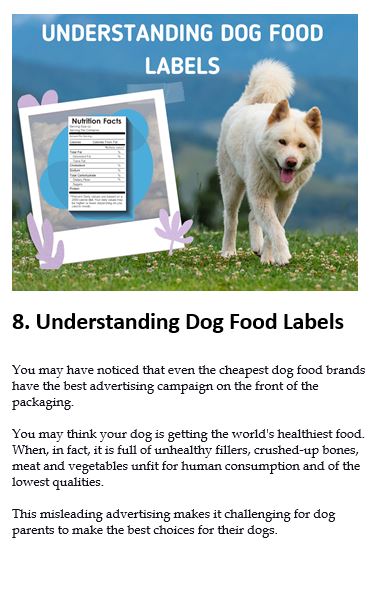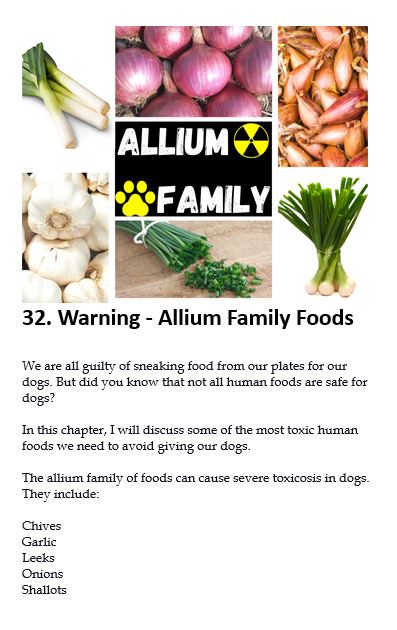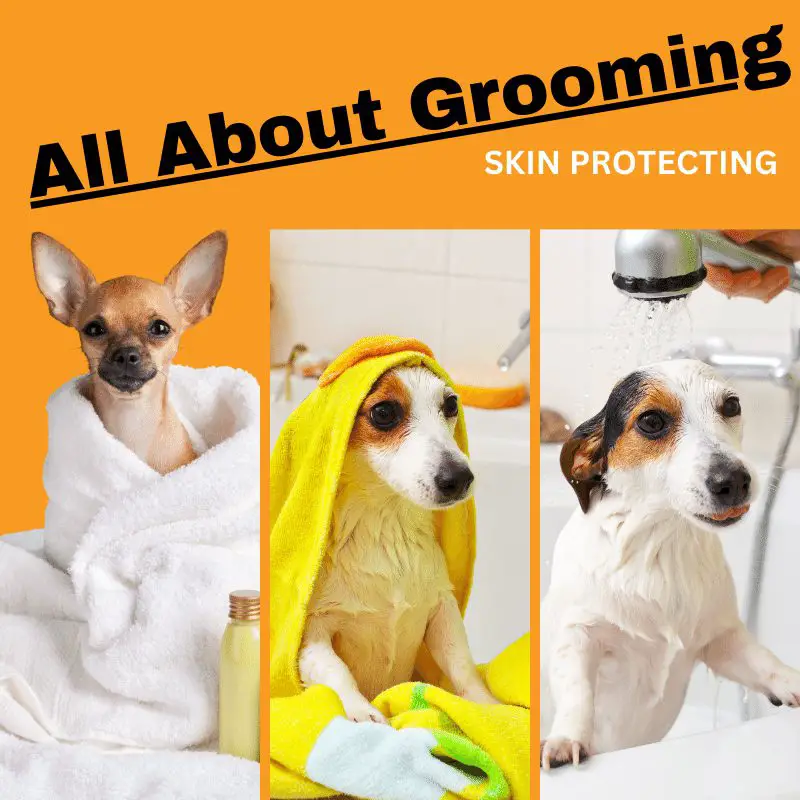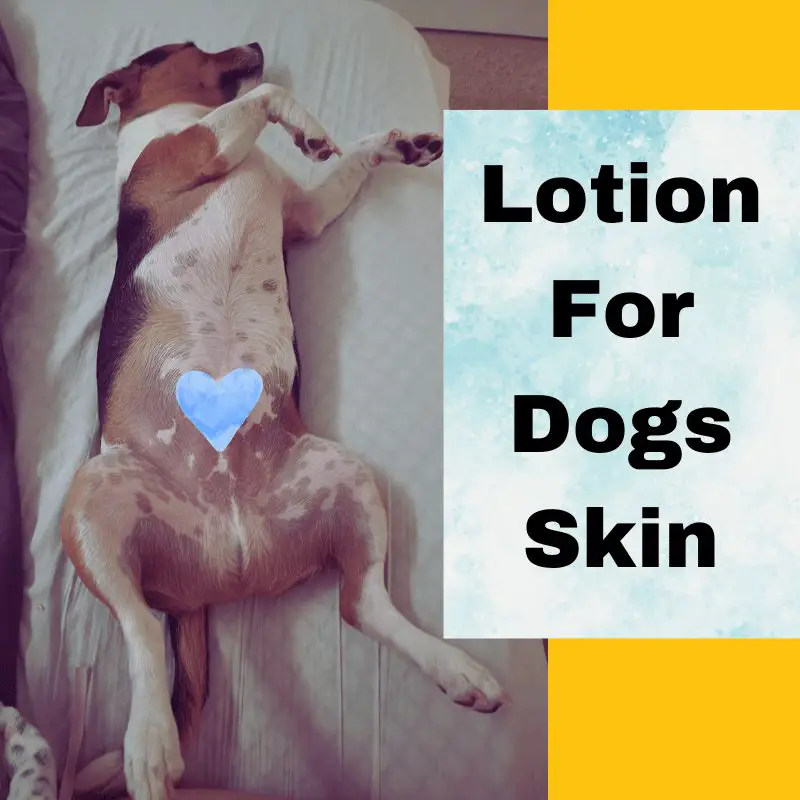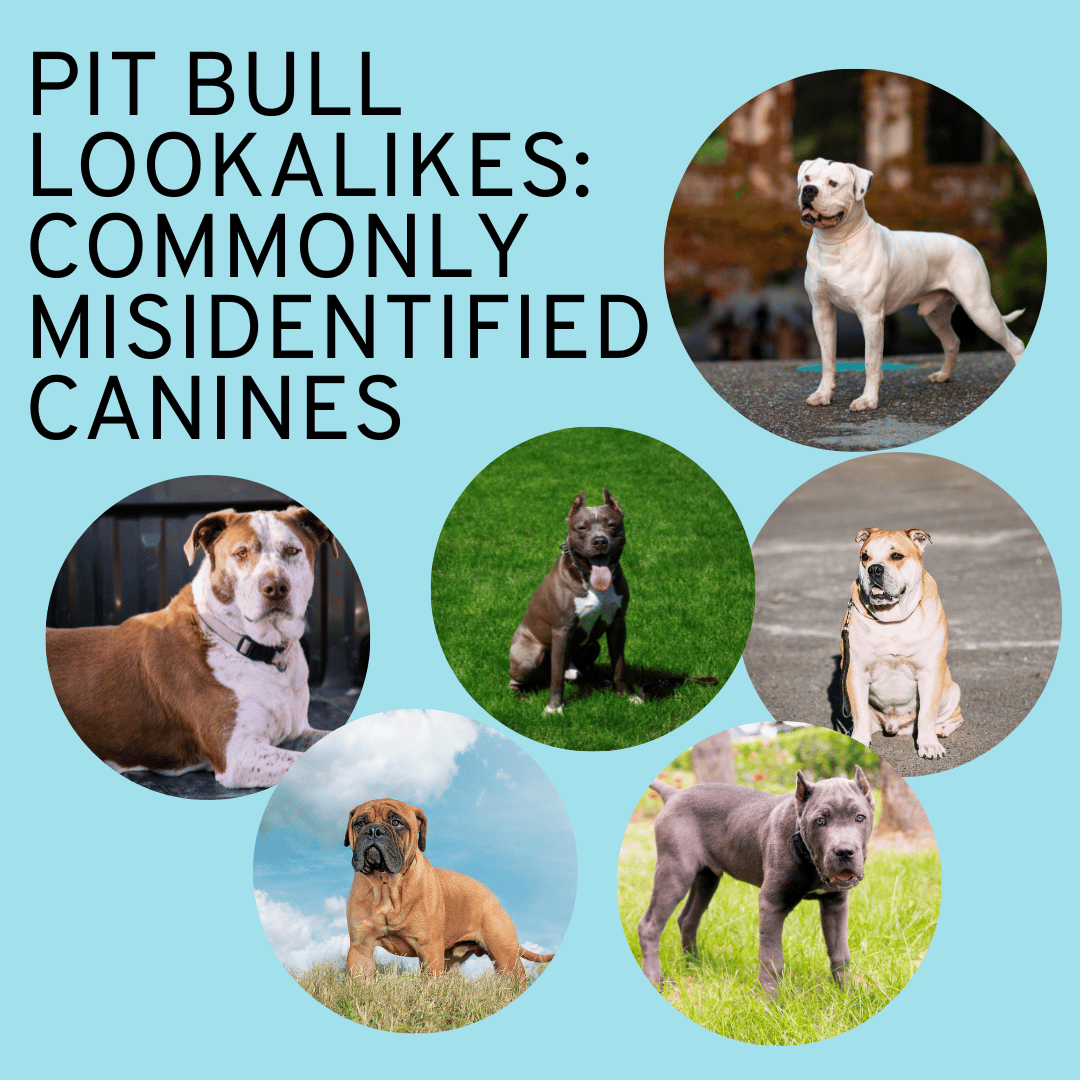From puppies to adults, it’s normal for dogs to go off their food. If you think about it, if you were to eat the same food day in and day out, you, too, would get fed up with eating the same food over and over, and this is what happens with our dogs.
Not only are they bored of the same foods, but as dogs age, their taste buds change, and food becomes not as exciting as it used to be. Another reason is that dogs no longer have to compete with their siblings anymore, and they know that food is always available, sometimes three or four times a day. This then opens the door to fussy eaters! Fussy eaters choose to eat only deliciously tasty food that suits them. But do you blame them?
I Understand The Worry
I have gone through this with my puppy into his adult years and want to share what I did to help my dog get back to enjoying his food like he used to, the healthy way!
It takes some time to get it right, and you may have to tweak the food in the future. But that’s the joy of dog parenthood!
Depending on what you feed your dog, either kibble, wet, raw, or homemade foods. I will run through each one and how you can help them fall back in love with their food.
It’s hard to find any puppy that doesn’t eat its food. It’s because it’s all new to them, and at this stage, a puppy doesn’t know what foods they like or dislike, and they haven’t had time to get bored with it.
All a puppy knows is it must eat it up fast before anyone else does!
My puppy started to go off his food at around eight months old. Kibble was no longer exciting for him. I was worried he wasn’t getting the nutrition a puppy needs at the growth stage. My dog would sniff the bowl, look at me and walk away. He was healthy and happy but fed up with the same daily food.
He had been eating the same flavour and brand for six months, so he was undoubtedly getting bored. I recommended that you change the type of meat or fish you give your dog every few days and rotate it so they can get various nutrients.
I tried many different foods and ways to bring his appetite back. I wanted him to enjoy his food like when I first took him home—no more competing for food, just tasty, healthy and enjoyable food for him.
What A Dog Does When They Dont Like Their Food
See a video of my dog sniffing his food and walking about, as he doesn’t like the smell of it.
Kibble
If your dog has gone off his kibble, no wonder; kibble is one of the most boring foods a dog could eat, but in today’s world, it’s easy, convenient and cheap.
Did you know that kibble isn’t that healthy for a dog? Due to the cooking process, kibble is heated to such a high temperature that all the nutrition is near on gone. It’s then sprayed with fats to entice a dog to eat it and added with vitamins and mineral supplements.
Some ideas you can do to help your dog eat kibble:
Add Water To Kibble
Adding water to kibble will become a different texture than what your dog is used to. It becomes fluffy whilst releasing some of the flavours from within, which can help your dog get a taste for it.
Soaking kibble best practices: add a few spoonfuls of water only for a light soak, or you can complete a heavy soak for a few hours to create a fluffy kibble dish. Heavy soaking kibble in water will benefit an elderly dog as it’s perfect for those who suffer from bad dental hygiene as they age. Plus, it’s easier for them to eat because they have been chewing hard kibble for many years. So, let’s make it easier for our senior dogs to eat.
Add Low-Sat Chicken Stock
You can also try adding a tiny spoonful of low-salt chicken stock. Never heavy soak it; it will turn into processed unhealthy mush even more. However, it must be free from garlic and onions as these ingredients are toxic to dogs. Make sure to check the back of the label for these hidden ingredients.
Kibble Toppers
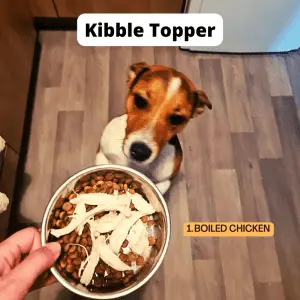
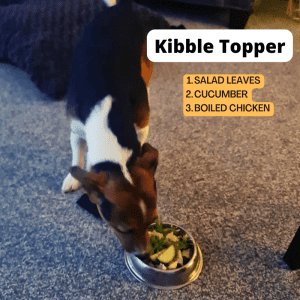

Since kibble is very dehydrating, adding some healthy toppers is wise. It will encourage your dog to eat the kibble, giving them extra hydration and added nutrition.
Food Topper Ideas
- Apple without seeds
- Boiled Broccoli
- Boiled carrots
- cauliflower
- Chopped peppers
- Freshly boiled chicken
- Freshly boiled turkey
- Green Beans
- Pieces of fresh cucumber
- Raspberries
- Sardines in spring water
- Scramble, boiled, or poached eggs
- Spinach raw or boiled
- Watermelon without seeds
Mega Healthy Toppers
- Sardines: rich in omega 3 and 6
- Probiotics: help a healthy digestion
- Goats Milk: for a healthy hydration boost
- Herbs: rosemary, sage, turmeric, parsley
See more fruits and vegetables that are safe and unsafe for dogs
Best Practises When Adding Kibble Toppers
Avoid carbs when adding kibble toppers like pasta, potato, or rice because kibble is already fully loaded with carbs.
Dogs need fewer carbs and will benefit instead from extra protein, fats and vitamins like A, C, E or K to support their joints, bones and your dog’s immune system.
When you add toppers to your dog’s kibble, ensure they are cooked and you haven’t added any seasoning. Some of the very toxic foods dogs eat can be fatal such as:
Toxic Foods
Allium Family Foods
- Chives
- Garlic
- Leeks
- Onions
- shallot
- Spring Onions
- Garlic
If you want to know more about these foods, I have written a detailed article explaining what happens to dogs when they eat them, along with prevention and recovery times in case of ingestion.
Artificial Sweetener
Sweetener is a sugar substitute, and its proper name is xylitol. It’s very toxic to a dog, so keep your dog well away from any foods or drinks that may contain this. Even chewing gum contains artificial sweeteners, and most foods with low calories or zero sugar usually contain xylitol. Always read the labels and check for them listed.
Wet Food
Some ideas you can do to help your dog eat wet food:
Have you ever smelt your dog’s wet food? Many dog food brands smell very bad. If they smell bad to you, they will smell even worse to your dog. A dog’s sense of smell is 40x better than ours, so no wonder they have gone off eating their wet food.
If you have foul-smelling wet food, you could try toppers like the ones added to Kibble “As above”; however, your best choice would be to swap brands. Many wet foods come in single cans, so you can grab a variety to try on your dog. Give it the sniff test! But make sure you are replacing it with something healthy by checking the ingredients labelled on the back; then, you can’t go wrong.
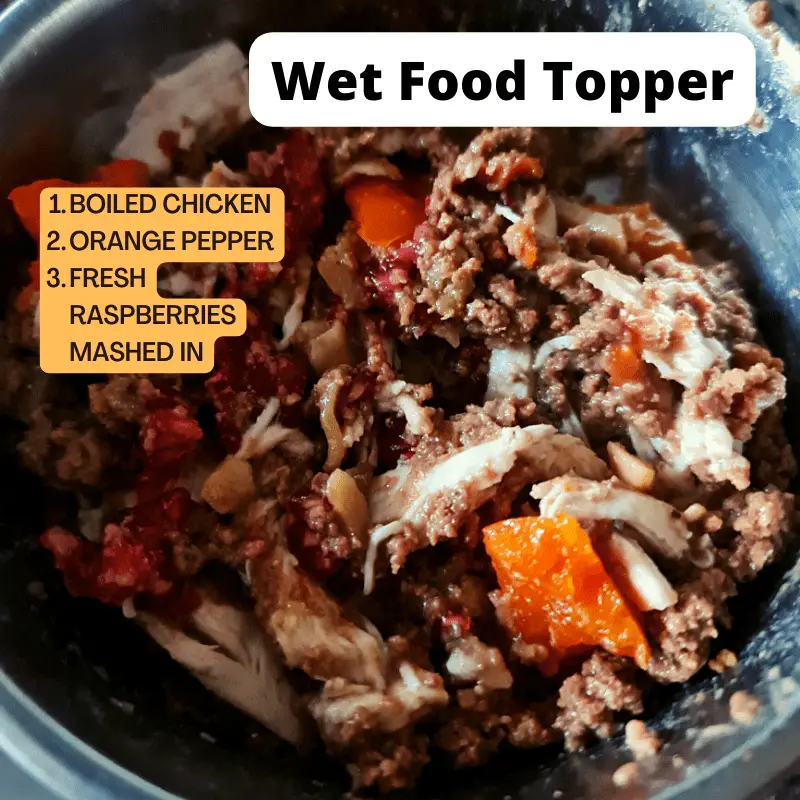
The best ingredients for healthy wet food will be labelled on the back of the can; never trust the front. Every dog food brand suggests from the front label that it’s the most nutritious food, which is not always true.
These ingredients matter if you want your dog to live a long, healthy life!
Good healthy ingredients to look for when choosing wet food:
- Vegetables are the purest quality vegetables needed in a dog’s diet.
- Botanicals, Herbs or Plants: These are added health enhancements for your dog. If this is listed on the label, it means excellent quality dog food with your dog’s health at the forefront of their company.
- Pure Meat: Meat taken from a specific animal. Such as beef, chicken, or duck. The best quality dog foods have pure or fresh meat labelled on the back.
Nasty ingredients to avoid when choosing wet food:
Keep away from brands that have any of the below in! NOT HEALTHY
- Bone Meal: These are bones ground up from any animal to provide a poor calcium supply and are often in large quantities.
- Derivatives: Can be any unwanted part of any animal, including beak, bones, or feet added. Sometimes it can state the type of animal. However, it will still be any part of that specific animal.
- Vegetable Derivatives: Vegetables from many possible vegetable sources. These can be either good or bad—generally, human vegetable preparation waste is unfit for humans.
- Fat: Animal fat is often sprayed on dog food to make it tastier and more appealing. The fat comes from the cooking process of the animal, and when it’s heated to a very high temperature, and as the grease floats to the top, it’s gathered up for use. Dogs need fat in their diet—however, it’s questionable if this is the best option.
- Corn: A cheap filler that turns directly into unhealthy sugars
Raw Food
Ideas to help your dog fall back in love with raw food:
If you have been feeding your dog raw food, then well done to you! You are classed as one of the best dog parents! However, just like any dog and their food, dogs can even go off the most nutritious natural food they could have. In this case, you can flash dry the raw food if you get raw food delivered from brands like Bella or Duke. Flash frying releases some of the many flavours.
Raw food smells like a pond, so flash frying is perfect for masking the pond-like stink.
See the video below on how to do this.
Video Bella and Duke raw food flash frying.
Home Prepared Dog Food
Help your dog get back to eating their entire bowl of home-prepared healthy food:
If you give your dog home-prepared foods that successfully cover your dog’s entire nutritional requirement, then this is a very healthy way to feed your dog. Hard work, yes, but very much so rewarding!
However, dogs can go off even home-prepared meals or pick out the good bits of food and leave behind the ones they are not so keen to eat.
It can be tricky to ensure your dog meets all its nutritional needs, especially when leaving food behind.
If your dog has started to go off their homemade food, try giving more variety. Another handy tip I find works well is to blend the foods they often leave behind.
In theory, home-prepared foods are better in smaller pieces so that your dog can easily digest them. But by thoroughly blending the food they dislike, you can mash it into the food they like.
For instance, if your dog doesn’t like boiled carrots, try blending or mushing them within the chicken. This way, your dog gets the nutrition they need and will be disguised.
I love to make my dogs homemade meals when I have time. If you don’t make home-prepared foods, I certainly recommend it. If you look at it this way, you’re halfway there once you start adding kibble toppers. Add some carbs like rice or sweet potatoes and calcium source to the toppers I suggested, and you’re pretty much there.
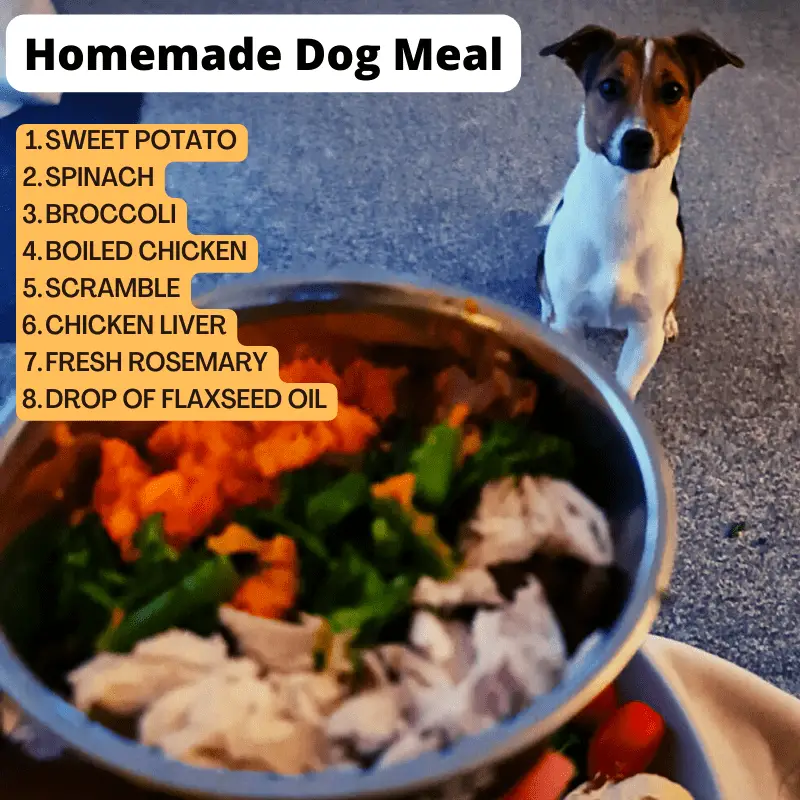
Percentage of food types to make homemade dog food
- 50% Meat/Fish:
Examples: chicken, beef, salmon, duck
- 25% Vegetables/Fruit:
Examples: broccoli, cauliflower, carrot, spinach, kale
- 25% Carbohydrates:
Examples: sweet potato, rice
Organ meat is packed full of highly nutritious vitamins and minerals. Try to add some organ meat also. Just 5% is enough.
One of the vitamins often overlooked when people start making homemade meals for their dogs is providing enough calcium. In the wild, dogs would have eaten bones to get most of their calcium. However, you can provide your dog with shop-bought calcium powder made from eggshells or bones. But it’s better fresh since you want to prepare all of your dog’s food. That’s the point of it! So ensure you include food items like eggs, kale, spinach or broccoli; these foods are high in calcium.
If you are worried about dogs getting all the nutrition they need daily, offering variety over a two-period is better. During this time, your dog will have all the nutrients they need.
Also, with home-prepared food made by you, you don’t need to worry about any dog food brands that have been recalled because something has gone wrong during the manufacturing process, such as contamination or they have been adding incorrect ingredients, too much or little.
Don’t Be Scared To Change Your Dogs Food
There is a big misconception that you shouldn’t change your dog’s food because it will become ill, but this isn’t the case. You should experiment with safe foods, find the best ones for your dog and add toppers when and if needed.
Changing food may bring food intolerances to light; however, dogs also have allergies like humans. In this case, you should watch for any signs of food intolerance and avoid the food in the future.
Healthy dogs are pretty resilient when flushing out the allergens from their body. However, a dog’s immune system can only do this now and then before it becomes tired and overworked. If the immune system is tired and it meets cells that bring severe disease into the body, it is less likely to be able to cope. But as a dog owner, you must spot the signs.
Did you know allergens or poor food nutritional sources mainly cause most dog skin irritations? Those are easy to fix once you know the signs and what foods or environmental factors to avoid.
These are the signs to look out for when giving your dog new foods.
Early Signs Of Food Intollenaces
- Breathing difficulties
- Coughing
- Diarrhoea (The earliest and most common sign)
- Ear Infections
- Red and Inflamed skin
- Scratching and itching
- Skin Infections
- Vomiting
Ideas To Get Your Dog Eating Kibble Without Adding Or Changing Dog Food.
If you don’t want to add to their food or even change their food entirely, you could try hand feeding your dog to get them going, or you can do what my dog and I used to do is play catch with kibble, a great game that he loves to play. It takes a while, but he loves catching the kibble that he isn’t that keen on when just placed in the bowl. Kibble that doesn’t move was not fun for him.
Another suggestion is to pretend to eat it yourself and put the bowl down. Although your dog may see through this, it’s worth a go.
With no success, you will have to take a different action like food toppers, new food, new brands, raw or even homemade meals. What you don’t want to do is leave them without them getting the nutrition they need.
The Dog Won’t Eat His Food But Will Eat Treats
Only fussy eaters will eat treats, not their daily dog food dish. It’s just because treats are treats and are made to have a lot of added flavours to entice a dog’s tastebuds.
It’s a simple balancing act for the owners a lot of the time. Many dogs prefer treats, so try not to replace food with treats.
You can try:
- Kibble food toppers
- Adding water
- Changing brands of food
- Changing food types, i.e., kibble, raw, homemade food, wet food
Shop-brought treats are a whole other topic; some treats are healthy, but most are not. Always check the back label.
Yes, just like humans, dogs like and dislike certain foods. Each dog has its preference for tastiness.
Smaller dogs are indeed fussier eaters; the small dogs I have had and come across certainly have a picker palate. However, don’t let this put you off. There is tasty food out there that every dog to enjoy. It’s about finding the right flavours and brands whilst keeping in line to meet their nutritional needs.
There could be many reasons a dog has lost its appetite, some severe issues such as medical or behavioural and environmental reasons. However, most of the time, they get bored with it. But do we blame them? Eating the same food day in and day out is boring. Offering your dog new food and variety is one way to help a dog’s appetite return and never leave.
Dog food manufacturers are probably the only people who say dogs don’t get bored of their food. This is because they don’t want you to change brands.
Variety is crucial to a dog’s booming healthy appetite.
Final Words
With all the information above, you can stop worrying, get your dog back into its food, and start enjoying and looking forward to eating again.
The above is aimed at healthy dogs that have gone off their food, and you, as a dog parent, are looking at ways to restore their faith in yummy food. If you feel your dog isn’t eating because of an illness, don’t hesitate to get them to the vet as soon as possible. A good indication of illness is vomiting, diarrhoea, sadness, pale gums, heavy breathing, and limpness. Our dog’s unusual characteristics should always be checked by a vet, especially if their food is not being consumed.
Good luck, and if you need any specific help for your dog, please don’t hesitate to contact me. I am a trained canine nutritionist, educator and dog owner that has run into all the above at some stage of my dog parenting life.
Please also share this with other dog owners and on social platforms. It can help a dog’s appetite! 🙂

Get My Book!
Author: Teresa Milne
Cram-Packed With Information That Matters
Want to know more about dogs and how to look after them nutritionally? If so, I have written a book of my top and most important advice for any dog owner, whether you are new to dog parenting or an existing one. My book will arm you with the tools of knowledge so you can make the best choices for your dog’s health.
The ultimate aim is healthy, happy dogs that live longer with their owners!
- 118 pages long and 43 chapters
- Release date: July 2022
- Written by Canine Nutritionist Educator
- A proud dog mum
Available to buy on Amazon

